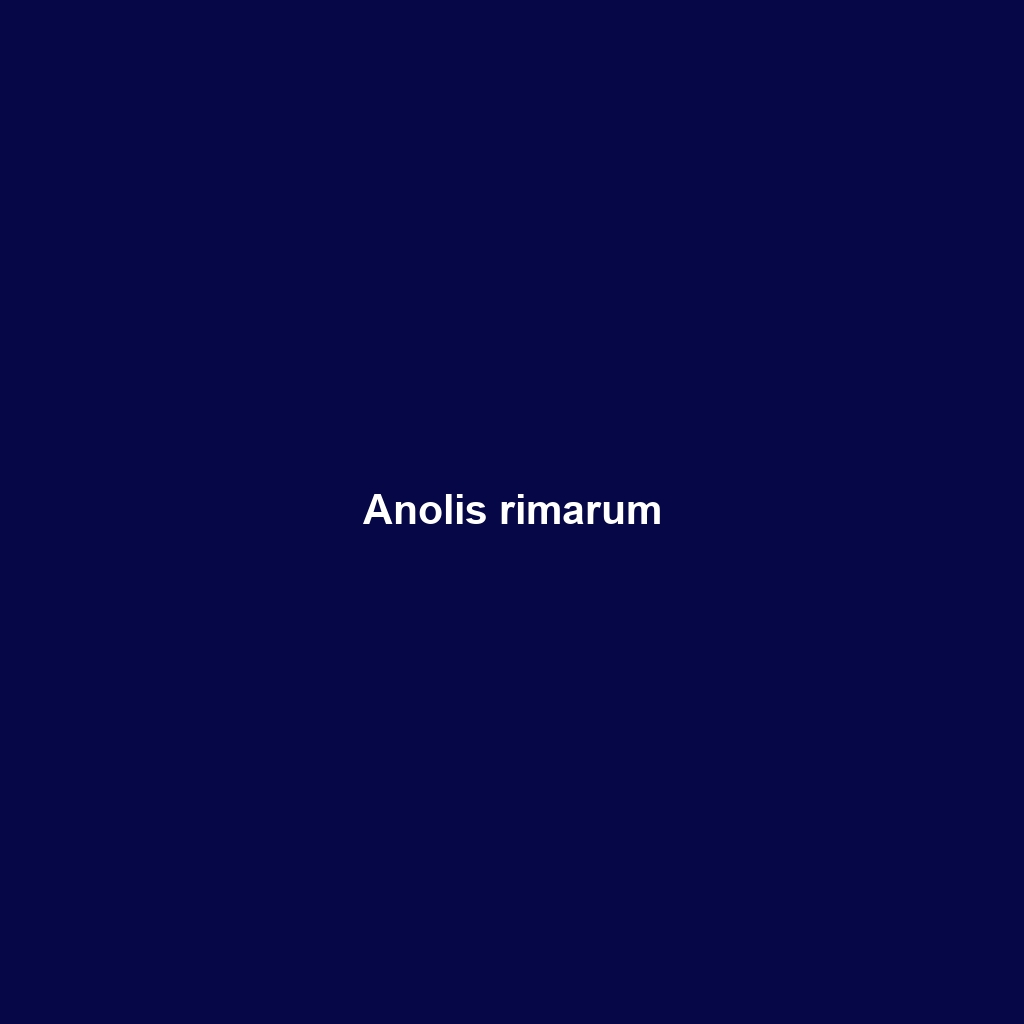Anolis rimarum: A Comprehensive Species Description
Common Name: Anolis rimarum
Scientific Name: Anolis rimarum
Habitat
Anolis rimarum is primarily found in the lush, subtropical forests of the Caribbean, specifically on the islands of Cuba and Hispaniola. This species thrives in humid, tropical environments, often seen on trees, shrubs, and foliage where it can camouflage and hunt for food. The warm, stable climate of these regions provides an ideal habitat for Anolis rimarum, making it a vital component of the local biodiversity.
Physical Characteristics
Anolis rimarum typically grows to a length of about 6 to 8 inches, including its tail. Its coloration varies from vibrant greens to browns, allowing it to blend seamlessly into its leafy surroundings. A distinguishing feature of this species is its long, slender body and a dewlaps that can be expanded during social displays. These physical traits not only aid in camouflage but also in mating strategies among males.
Behavior
This species is diurnal, primarily active during the daytime. Anolis rimarum exhibits fascinating behaviors such as territorial displays, where males will puff out their dewlaps and perform push-up movements to assert dominance. Their agile climbing skills enable them to navigate their arboreal habitats with ease, often seen basking on branches to regulate their body temperature.
Diet
Anolis rimarum is an insectivorous lizard, feeding primarily on small insects such as crickets, ants, and spiders. They may also consume other small invertebrates. Their feeding habits play a crucial role in controlling insect populations, making them an essential species in their ecosystem. Anolis rimarum utilizes a sit-and-wait strategy to catch prey, a behavior that enhances its predatory efficiency.
Reproduction
This species typically breeds during the wet season from May to August. Female Anolis rimarum lay clutches of 1 to 2 eggs in moist substrates, which incubate for approximately 6 to 8 weeks before hatching. Newly hatched lizards are independent and must quickly adapt to their environment to survive. Mating displays often involve elaborate movements and dewlaps to attract females.
Conservation Status
Anolis rimarum is currently listed as vulnerable due to habitat loss and environmental changes affecting its population. Conservation efforts are being implemented to preserve its natural habitat and mitigate threats posed by deforestation and climate change.
Interesting Facts
One fascinating aspect of Anolis rimarum is its remarkable ability to change color based on its environment, a trait that enhances its camouflage and survival. Additionally, this species is known for its dynamic mating rituals, which involve intricate displays of coloration and physicality.
Role in Ecosystem
Anolis rimarum plays a vital role in its ecosystem as both a predator and prey. By controlling insect populations, they help maintain ecological balance. In turn, they serve as a food source for larger predators, including birds and snakes, thus contributing to the food web dynamics in their habitat.
